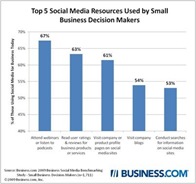![business-conflict-resolution[5] (1)](../../wp-content/uploads/2012/09/business-conflict-resolution5-1-150x150.jpg) It’s easy to play up the adversarial relationship between “Hacks” and “Flacks,” but the truth of this perennial love/hate relationship is that that we really do need one other. Although the value of PR professionals to journalists is often called into question, as this article points out, “the popularity of services like HARO and ProfNet should be proof enough that journalists have a need for PR professionals.”
It’s easy to play up the adversarial relationship between “Hacks” and “Flacks,” but the truth of this perennial love/hate relationship is that that we really do need one other. Although the value of PR professionals to journalists is often called into question, as this article points out, “the popularity of services like HARO and ProfNet should be proof enough that journalists have a need for PR professionals.”
That said, as PR professionals, our jobs are two-fold: Not only are we advocates for our clients, but we’re also here to make life easier on our journalist comrades. Between a non-stop news cycle, scary budget cuts and mounting competition for clicks, there’s a good chance they’re working in a pressure cooker environment, so the best thing we can do is to think from their perspective and assist rather than annoy. After all, it comes down to relationships, and there’s nothing worse than trying to work with someone who makes your job harder.
So, without further ado, here are our “Top 10 Yeas and Nays” for better PR practices. Although some may seem pretty obvious, those are often the ones that are first forgotten.
DON’T even think about…
- Not doing your research/reading a journalist’s articles before pitching. Know who you’re targeting, and only send something to them that you think would be of interest.
- Sending a pitch via email blast. The shotgun-spray approach is not appreciated; rather, think like a sniper.
- Asking if you can see and/or edit an article before it’s published. This is a huge no-no!
- Making up a response if you don’t know the answer. It’s perfectly acceptable to say, “I’m not sure. Let me check and get back to you.”
- Disregarding deadlines. Your journalist friend has theirs, so make sure you meet yours.
If you want to develop good working relationships, DO try…
- Respecting the journalist’s preferences. If they’re an email person, and you’re more comfortable on the phone, adapt. Work their way.
- Keeping pitches and releases short and to-the-point (and as buzz-free as possible). Repeat after me: Less is more.
- Thinking about how to streamline the process. Have assets and answers ready, and be available when the reporter is writing and may have a question. (Package the story beforehand as much as possible: angle, visual content, facts, references, spokespersons, etc.)
- Proofread, proofread, proofread. And when in doubt, hit spell check again before sending that pitch – perhaps even send to a colleague to review with fresh eyes before contacting the reporter.
- Focusing on relationships. I said it above, and I’ll say it again – it’s all about relationships. They make the job easier and a whole lot more fun! For example, interact with, read, comment on, share and praise a reporter’s work that you find of interest - not just when it’s a story about your company or client.
And, as always, there’s often no better place to hear it than from the horse’s mouth. So unless you don’t mind finding yourself mocked publicly (yep, we’re quite aware of the conversations going on here, here or here), we also suggest checking out (and heeding!) veteran reporter Rafe Needleman’s Pro PR Tips: http://proprtips.com/
Which tips would you add to the list? Feel free to share your thoughts in the comments below.

 nking about the little details? Once you win a customer or a client, are you welcoming them and thanking them for their business? Does your website make an interaction with your company pleasant and easy, or are you making prospects work too hard to become a customer? Can they easily find what they are looking for? Do you have a waiting room that’s comfortable or stark? Do you think about simple yet “nice touches” that would make a prospect want to do business with you over a similar competitor?
nking about the little details? Once you win a customer or a client, are you welcoming them and thanking them for their business? Does your website make an interaction with your company pleasant and easy, or are you making prospects work too hard to become a customer? Can they easily find what they are looking for? Do you have a waiting room that’s comfortable or stark? Do you think about simple yet “nice touches” that would make a prospect want to do business with you over a similar competitor?
